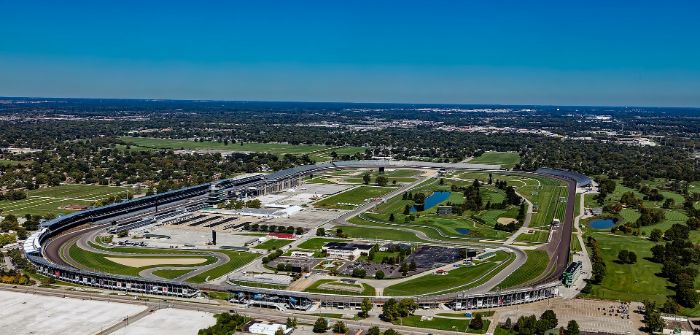Universities from around the world are to compete for a US$1m prize in a two-year Indy Autonomous Challenge.
Indianapolis Motor Speedway (IMS) and Energy Systems Network (ESN) have announced a two-year US$1m prize competition that will culminate in a head-to-head, high-speed autonomous vehicle race on October 23, 2021, around the Speedway’s famed 2.5-mile (4km) oval.
The Indy Autonomous Challenge is a competition among universities to create software that will enable self-driving Indy Lights race cars to compete in a head-to-head race on the IMS track. The development of such software can help speed the commercialization of full autonomous vehicles and enhance existing advanced driver-assistance systems (ADAS) in people-driven cars.
“There’s a fundamental connection between innovations on the racetrack and real-world improvements on the highway,” IMS president J Douglas Boles said. “While drivers will always be at the heart of racing at IMS, we’re excited to be part of this groundbreaking and exciting initiative.”
The Challenge consists of five rounds. Teams submit a short white paper during the first round, and in the second round, they must demonstrate vehicular automation by sharing a short video of an existing vehicle or by participating in Purdue University’s self-driving go-kart competition at IMS.
The Indy Autonomous Challenge’s simulation sponsor ANSYS will supply its industry-leading VRXPERIENCE Driving Simulator powered by SCANeR and its SCADE software development suite to teams for their use in developing autonomous vehicle software. ESN and ANSYS will co-host “hackathons” to familiarize teams with the simulator’s full potential and ANSYS will award US$150,000 in prizes to the top finishers in a simulated race during the third round.
The fourth round will enable teams to test actual vehicles at IMS in advance of the head-to-head race around the oval. First-, second- and third-placed finishers in the race will win US$1m, US$250,000 and US$50,000, respectively.
“What we’re asking universities to do is hard,” said Matt Peak, director of mobility at Energy Systems Network. “Our hope is that by bringing together and offering up to participating teams the world’s premier automotive proving ground, performance chassis manufacturer, engineering research center and simulation platform, as well as nearly US$1.5m in cash awards, universities will see the Challenge as not just throwing down the gauntlet but also as extending the helping hand to accelerate innovation and the arrival of new technologies.”
Joining IMS and ESN for the announcement were race car manufacturer Dallara Automobili and the Clemson University International Center for Automotive Research (CU-ICAR). Through Clemson University’s long-running vehicle prototype program Deep Orange, Clemson graduate automotive engineering students will collaborate with ESN and Dallara to engineer an autonomous-capable version of Dallara’s 210mph (338km/h) IL-15 Indy Lights chassis that can accommodate the competing university teams’ driverless algorithms. Participating teams will be directly involved in the converted vehicle’s design and specifications through monthly virtual design reviews (VDRs) and other feedback channels throughout the competition.
Five universities registered for the competition upon its opening: Korea Advanced Institute of Science & Technology (KAIST), Texas A&M Transportation Institute (TTI), the University of Florida, the University of Illinois and the University of Virginia.


